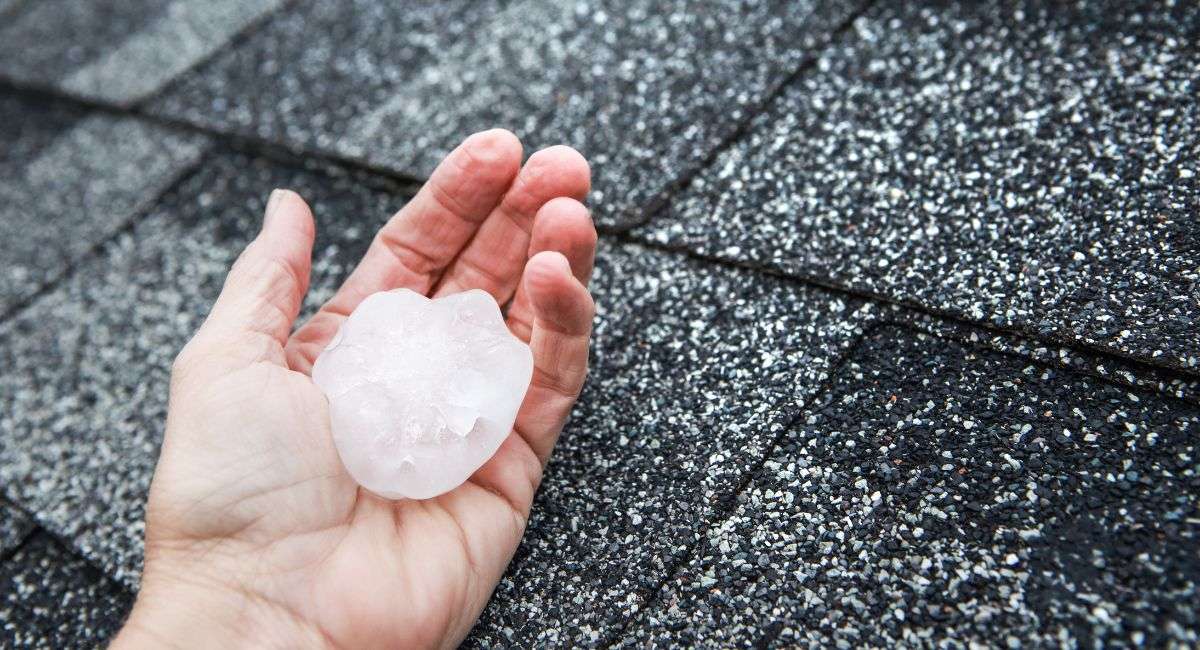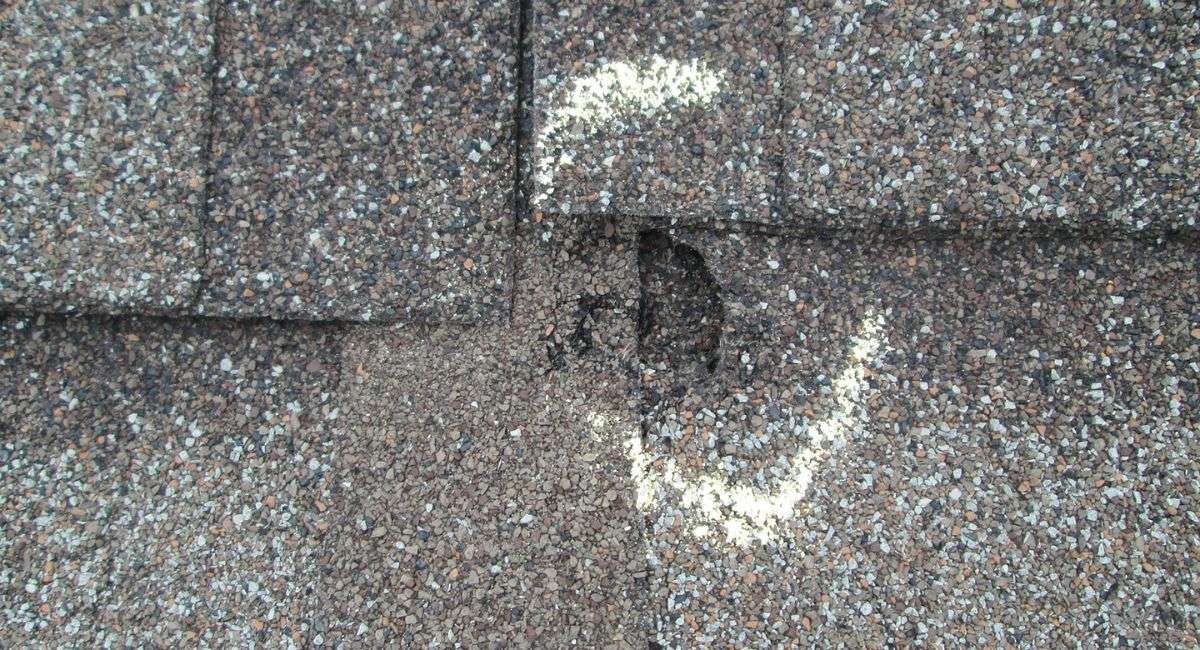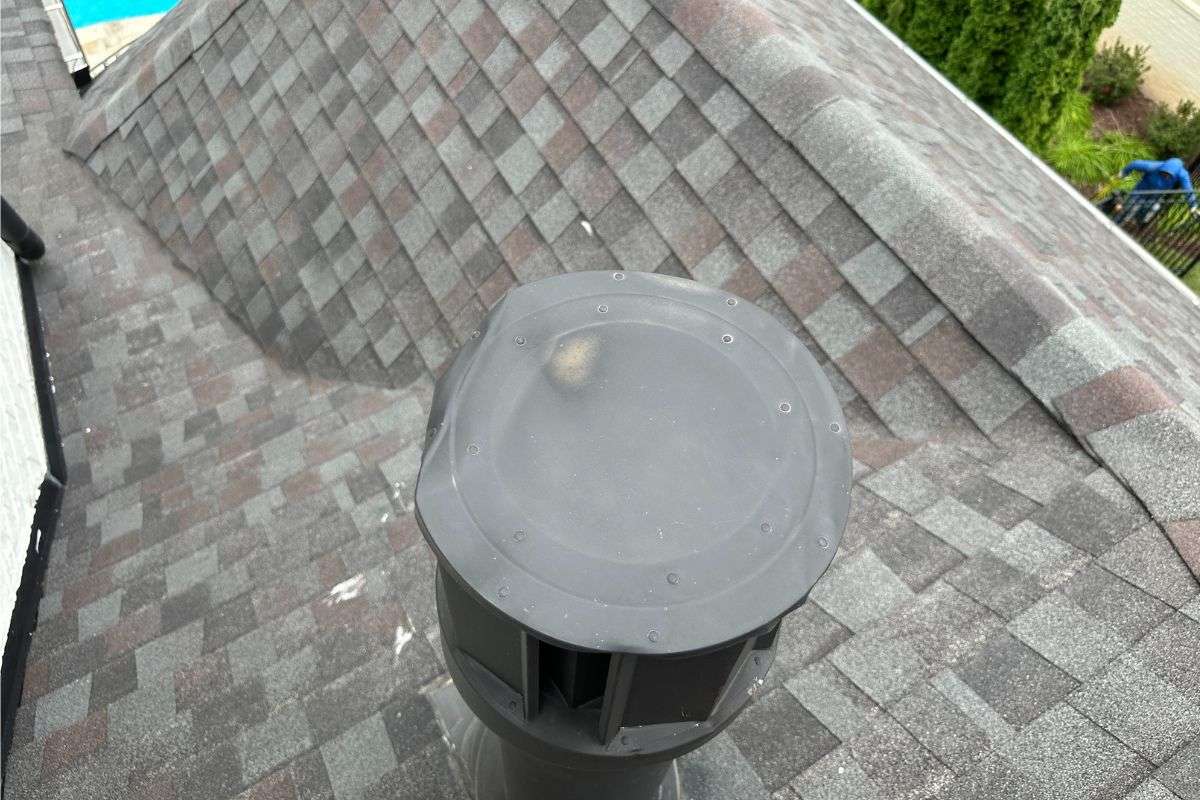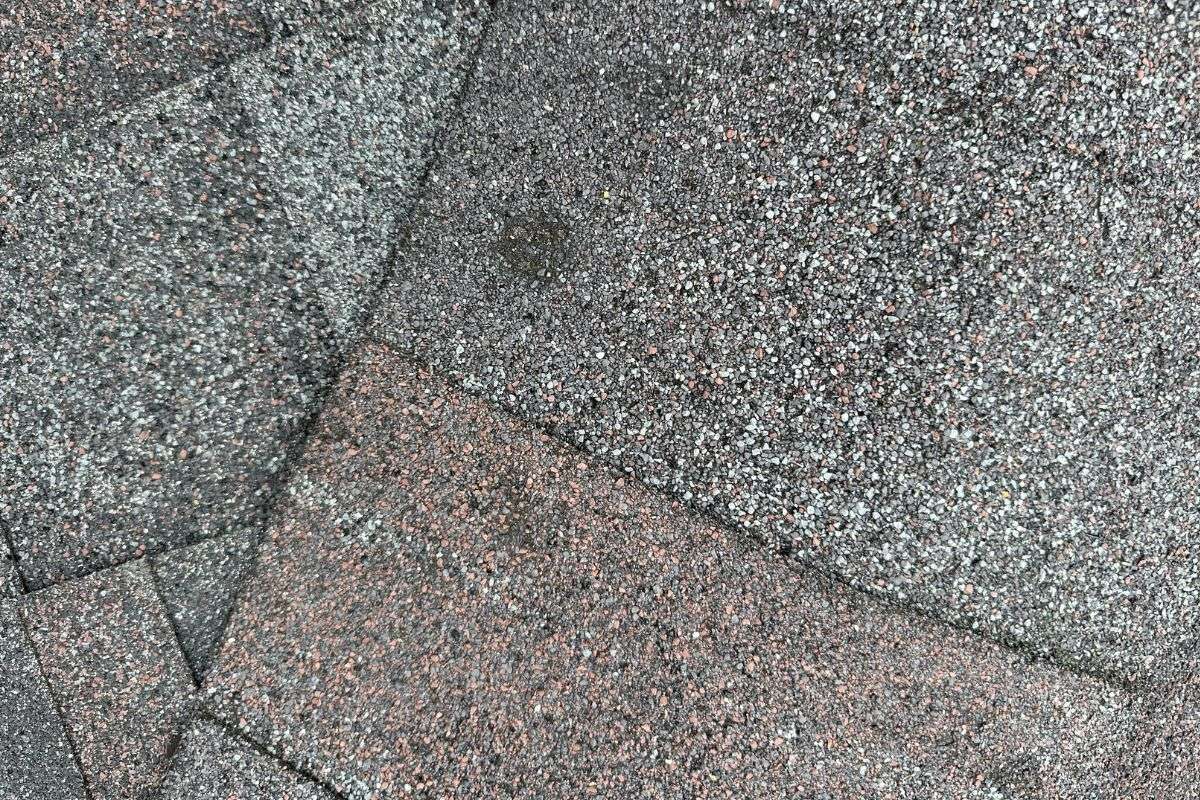Hail Damage, Roofs, and Insurance Claims

Hail damage is one of the biggest issues caused by severe weather, posing serious risks to the strength and functionality of your roof. Hail damage happens when hailstones — frozen balls of ice formed during strong thunderstorms—hit your roof with enough force to cause visible or hidden problems. How bad the damage is depends on a few things: the size and hardness of the hailstones, how fast they’re falling, the type of roofing material you have, and the condition of your roof beforehand.
The tricky part? Hail damage isn’t always obvious right away, but if it’s ignored, it can turn into much bigger (and more expensive) problems over time.
In this post, we’ll break down how hail impacts roofs, why it’s a serious concern for property owners, and the risks of ignoring the damage. We’ll also cover how to handle insurance claims for hail damage and why it’s crucial to act quickly.
Hail Damage to Shingles
Hail can do a lot of cosmetic damage to a roof, especially one with asphalt shingles, which are the most common roofing material for homes. When hail hits, it can knock off or completely dislodge the protective granules on the shingles. These granules are key to protecting the asphalt layer underneath from UV rays and weather wear.
Without them, the shingles start to age faster, which makes them more vulnerable to leaks and other damage. Over time, as the granules keep falling off, the exposed asphalt becomes brittle and can crack, tear, or develop leaks that lead to water damage inside your home.
In more intense hailstorms, the impact can crack, tear, or even punch holes in the shingles, creating an immediate risk for water to seep through. The problem is, hail damage isn’t always easy to spot. Your roof might look fine at first glance, but the underlying damage can get worse over time, turning what seems like a minor issue into a big headache.
For metal roofs, which are generally tougher, hail can still cause problems. Large hailstones can leave noticeable dents, which might not only make the roof look bad but could also weaken its structure. Plus, dents can trap water and debris, leading to corrosion or further wear and tear.
If you have a tiled roof, hail can crack or even shatter the tiles, leaving gaps where water can get through. While tile roofs are durable in many ways, they’re especially vulnerable to damage from bigger hailstones.
No matter what type of roof you have, it’s important to take hail damage seriously. Acting quickly can save you from bigger problems and costly repairs down the road.
Why Hail Roof Damage Matters

Hail damage to your roof isn’t just about appearances—it’s a serious issue that can spiral into bigger problems if ignored. Your roof is your home’s first line of defense against the elements, and even small damage can weaken that protection. Once water starts sneaking in, it can lead to a host of issues.
Water can cause mold and mildew to grow, which isn’t just bad for your home’s structure—it can also impact your family’s health. Over time, water exposure can weaken wooden supports, ruin insulation, and even create electrical hazards if it reaches your wiring. What might start as a minor leak could turn into a major (and expensive) repair project affecting multiple parts of your home.
Hail can also knock loose the granules on asphalt shingles, which often end up clogging your gutters. This adds extra weight to your gutters, and if they become overloaded, sections can even detach from your house. Clogged gutters can mess with water drainage, increasing the risk of foundation damage or basement flooding. In the worst cases, falling gutters can even pose a safety risk.
On top of that, hail damage can shorten your roof’s lifespan. A roof left unrepaired after hail damage will wear out much faster, which can lower your home’s value and even make it harder to sell later on.
Why Putting Off Repairs is a Bad Idea
Delaying hail significant damage repairs can cost you a lot more in the long run. At first, the damage might look small or go unnoticed, but over time, these little issues can turn into major headaches. For example, hail can knock granules loose, leaving shingles exposed to UV rays that break down the asphalt underneath, leading to cracks and leaks. By the time you notice the problem, the damage might already be extensive.
There’s also the issue of insurance claims. Many insurance companies have strict time limits for filing a claim after a hailstorm. If you wait too long to get your roof checked, you might miss the window and have to cover the repairs out of pocket. Most providers expect you to get an inspection and document the damage promptly after the storm.
Hail damage can even affect your energy bills. A damaged roof doesn’t insulate your home as well, which can lead to higher heating and cooling costs over time. Those extra expenses can add up quickly.
What to Do After a Hail Storm
If a hailstorm has hit your home, taking action quickly is key. Start by checking your roof for any obvious signs of damage, like missing granules, cracks, or dents. Some damage isn’t always visible, though, so it’s smart to call a professional roofing contractor for a thorough inspection. They’ll spot both surface-level and hidden damage to make sure nothing gets missed.
Next, document any damage you find—take photos and jot down notes. This will come in handy when filing an insurance claim. Contact your insurance company as soon as possible to report the damage and start the claims process. A roofing contractor can help here too, providing detailed reports and repair estimates to support your claim.
Finally, don’t put off repairs. The longer you wait, the worse the damage can get—and the more expensive it’ll be to fix. Acting quickly to repair hail damage can protect your home, save you money, and give you peace of mind.


Will Insurance Cover Hail Damage?
Your homeowner’s insurance may cover hail damage, but this largely depends on the specifics of your policy. Many standard homeowner’s insurance policies include hail damage coverage, but certain exclusions or limitations may apply based on your location, the age of your roof, or the condition of the property prior to the incident. It’s important to review your policy closely and consult with your provider to understand what is included.
However, delaying the process of filing a claim or waiting too long to repair or replace your roof can lead to significant financial consequences. Most insurance providers set a strict one-year window from the date of the hail event for filing a claim.
If you fail to file within this period, your claim may be denied, leaving you to cover the full cost of repairs or a roof replacement out of pocket. Additionally, waiting to address hail damage repairs could allow issues to worsen over time, such as leaks and structural damage, increasing repair costs and potentially making the issue more difficult to resolve.
How Waiting to Fix Hail Damage Can Cost You
Taking care of hail damage quickly isn’t just about keeping your roof in good shape—it’s also a smart financial move. Ignoring the damage can lead to bigger issues that lower your property value and hike up your insurance premiums. A home with visible, unrepaired roof damage doesn’t look great to buyers, and many will factor the cost of a roof replacement into their offers. This could seriously cut into your property’s value, especially if buyers see the damage as a sign of neglect.
If you live in an area with frequent hailstorms, insurance companies might adjust your premiums to reflect the higher risk. Waiting too long to repair the damage could mean higher monthly costs for your insurance. Some providers might also require stricter inspections or bump up your deductibles for hail damage, leaving you with more out-of-pocket expenses.
The bottom line? The longer you wait to fix hail damage, the more it could cost you in repairs and insurance.
What to Do After a Hailstorm
Hail damage isn’t just a cosmetic problem—it can seriously affect the structure of your home and its value. Even minor damage can lead to leaks, water damage, and other costly issues if ignored. Acting quickly after a hailstorm is key to avoiding bigger headaches down the road.
Start by scheduling a professional roof inspection. Hail damage isn’t always obvious, and small issues can easily go unnoticed until they turn into major problems. A qualified roofing contractor can spot hidden damage, give you a detailed report, and help you with your insurance claim.
If you’re in Tennessee or Georgia, Roof MD is here to help. Our team specializes in finding and fixing hail damage, and we’re pros at handling homeowners insurance claims. We’ll take a close look at your roof, explain the damage, and help you decide whether repairs or a full replacement are the best option.
At Roof MD, we also work directly with all insurance companies to make sure you get the most out of your claim. Our goal is to fully restore your home and take care of any hail-related issues so you can move forward stress-free. Don’t wait—acting fast can save you money and hassle in the long run. Contact Roof MD today for a free inspection and expert advice!
